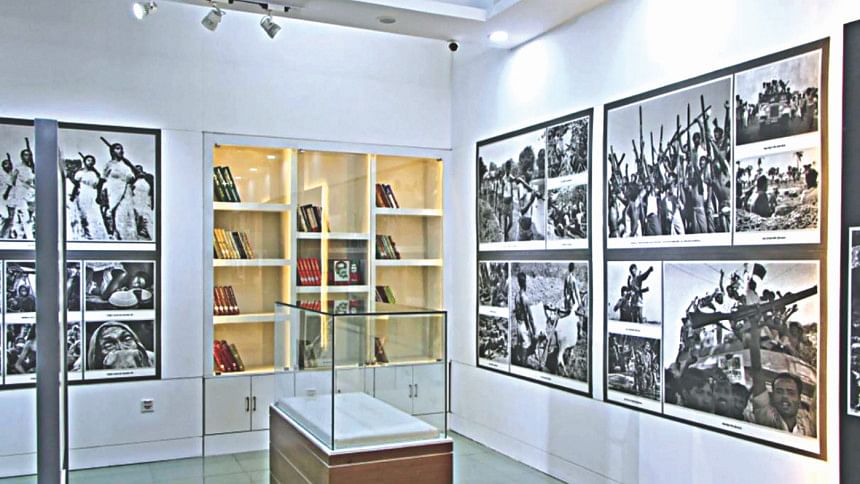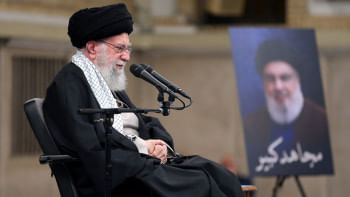A Time Capsule to the Liberation War

In the momentous month of March, I seized the opportunity to visit the Liberation War Museum.
Situated in Agargaon, the museum is a blocky concrete building, with faux bullet holes and rods sticking out, looking like a war-torn structure. Ascending the front staircase, I was greeted by a fountain disguised as a circular pool of still water with a burning flame in the middle. You have to pass by it in order to enter the vast, shaded lobby. After paying a modest fare for the tickets, I proceeded to the check post, from where a long, winding catwalk bridge bathed in sunlight leads to the galleries. On the walled side were motifs of national symbolism, such as the shapla, carved into concrete blocks here and there.
The first gallery is the biggest in the museum because it displays everything from ancient Bengal to the events right before the Liberation War. Terracotta plaques from viharas across Bangladesh give way to displays from Mughal Dhaka. A large section of the gallery is devoted to the colonial history, highlighting the role Bengalis played in the rebellions—both big and small—to fight the Brits. Another significant portion of the gallery is dedicated to our struggle for independence since Partition, from the Language Movement to the Pakistani general election in 1970.
The remaining three galleries divide the events of the Liberation War into a three-act structure. The first one depicts the immediate events before the war and its early days, including the historic 7th March speech and Operation Searchlight. The second act documents the peak of war: the plight of refugees, organisation of combat and international public support. The final gallery narrates the last days of war, covering the rampant sexual violence, assassination of intellectuals, and contribution of Indian forces. The tour ends as Bangladesh achieves victory and begins its journey as an independent nation.
By curating invaluable documents, artefacts, pictures, footage and newspaper clippings from every era in our long battle for independence, the Liberation War Museum paints a well-rounded picture of the history of not only Bangladeshis, but Bengalis as well.
Adhora Ahmed daydreams too much. Send her reality checks at [email protected]

 For all latest news, follow The Daily Star's Google News channel.
For all latest news, follow The Daily Star's Google News channel. 



Comments